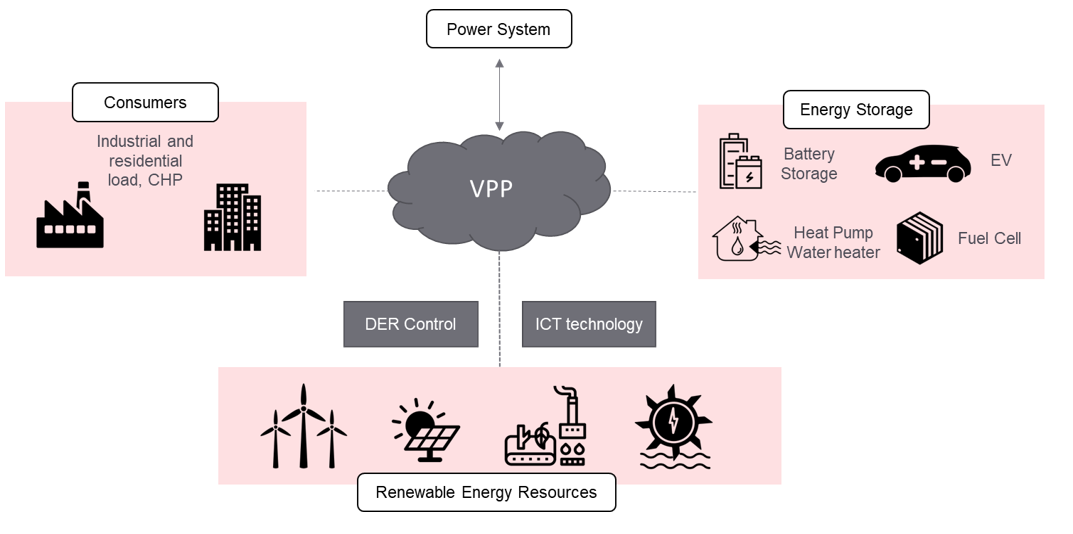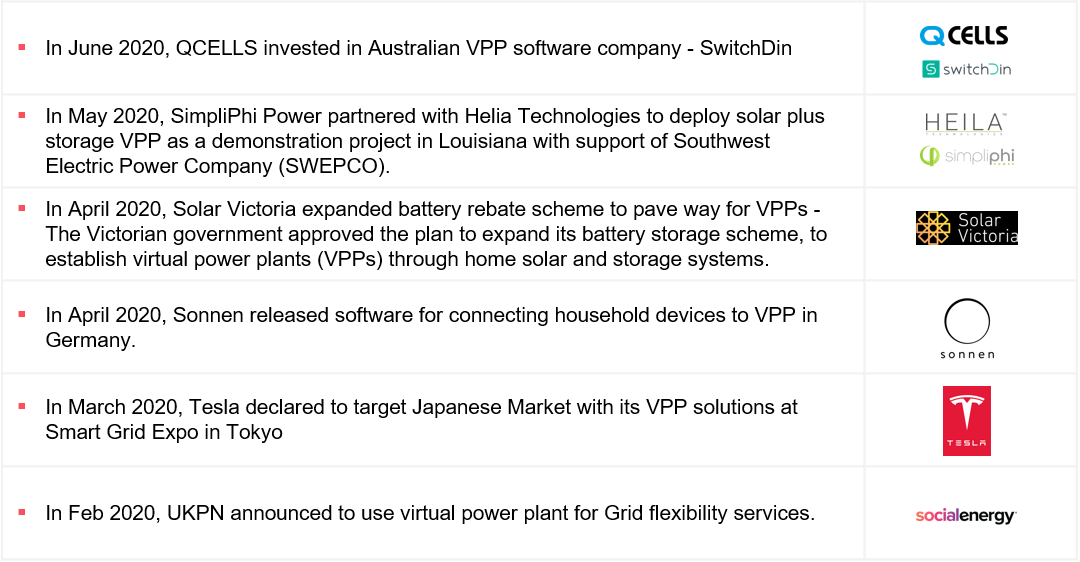Virtual Power Plants: Strengthening Tomorrow’s Grid
 Energy
Energy
Introduction
The world’s electricity grid is shifting from a large, centralized power station to a diversified electricity supply system. The penetration of Distributed Energy Resources (DERs) is rapidly increasing worldwide, mainly associated with the demand for a sustainable energy system.
In parallel, deregulating the electricity market from a monopoly to a competitive market structure continues to attract more attention and gain momentum.
The increasing share of DERs poses new challenges on the grid. Individual DER is generally prohibited from participating in the current electricity market. DER’s intermittent nature results in fluctuating output and is therefore considered non-dispatchable. Lack of communication among neighbouring DERs restricts the capabilities of DERs.
These scenarios promoted the concept of Virtual Power Plant (VPP) for the smooth integration of DERs into the grid and the centralized management and coordination of demand response (DR). VPPs can assist the utility in managing the complexities associated with the pricing, DR, and DERs for load reduction, wholesale market participation, and distribution management.
In the last five years, the VPP uptake and development of software platforms for VPP monitoring and control witnessed tremendous growth. Regions with a higher share of existing DERs are exploring the VPP concept and are entering into partnerships to gain technological expertise. Various utilities and network operators are conducting multiple pilot projects to establish the role of VPPs in the future grid.
Concept of Virtual Power Plant
VPP is an aggregation of a variety of DERs installed at different locations within a distribution network. The DERs include various technologies such as wind power plants, solar PV plants, flexible power consumers and storage systems, and CHP units. The aggregated DERs ge ts dispatched through a central control room, equipped with a VPP control and monitoring software. The objective of a VPP is to unburden the grid by smartly distributing the power generated by the individual small capacity DERs during periods of peak load. Additionally, the DERs in a VPP are traded on the energy exchange platforms to generate separate revenue streams. A VPP consists of three main parts, including generation technology, energy storage technologies, and Information Communication Technology (ICT).
ts dispatched through a central control room, equipped with a VPP control and monitoring software. The objective of a VPP is to unburden the grid by smartly distributing the power generated by the individual small capacity DERs during periods of peak load. Additionally, the DERs in a VPP are traded on the energy exchange platforms to generate separate revenue streams. A VPP consists of three main parts, including generation technology, energy storage technologies, and Information Communication Technology (ICT).
Additionally, in light of increasing electrification of the transport segment, vehicle-to-grid (V2G) technology can enable vehicles to become an integral part of VPPs.
What value proposition does Virtual Power Plant offer?
VPP, based on its functionalities, provides two types of value propositions: Technical VPP (TVPP) and Commercial VPP (CVPP). The TVPP consists of DER from the same geographic location and provides local system management for Distribution System Operator (DSO) and system balancing and ancillary services to Transmission System Operator (TSO). A CVPP has an aggregated profile and output that embodies the cost and operating characteristics for the DER portfolio and assists in trading in the wholesale energy market, balancing trading portfolios and providing services (submission of bids and offers) to the TSO.
Benefits
VPPs are the answer to complexities observed due to increasing distributed generation share and entails various advantages.
- Main benefits for owners of DER units:
- Receive the value of flexibility
- Increased asset value in energy markets
- Reduced financial risk
- Improved ability to negotiate commercial conditions
- Main benefits for DSOs and TSOs:
- Increased visibility of DER units for consideration in network operation
- Using DERs flexibility for network management
- Improved use of grid investments
- Enhanced coordination between DSO and TSO
- Mitigate the operational complexity caused by the growth of intermittent DERs
- Main benefits for Policy Makers:
- Cost-effective and large-scale integration of renewable resources
- Small-scale DERs participation
- Facilitate the targets for renewable energy deployment and reduction of CO2 emissions
- Increased consumer choice and new employment opportunities
- Main benefits for suppliers and aggregators:
- New offers for consumers and DER units
- Mitigating commercial risk
- New business opportunities
Recent Developments
Recently, the US, Australia, Japan, UK, and Germany observed a growing trend in VPP market in terms of technology partnerships, new market players, pilot projects, incentives and investments.
Way Forward
As DERs and DR become more prevalent in electricity supply systems, VPPs’ role will become more crucial in managing and trading the assets. The access of aggregated and controllable DER through VPP will provide the power system with a provision of dispatchable power i.e., providing ancillary services through DERs. VPPs can offer voltage support to the grid on the distribution feeder side with high renewable resource penetration and delivering capacity and frequency regulation at the wholesale market level. Furthermore, the increasing share of electric vehicle and battery storage depicts substantial opportunities for VPPs to commit and participate in various grid flexibility services. Currently, for energy trading, implementation of Blockchain technology is in the pilot phase, and it is necessary to establish its applicability for seamless adoption in the future.
A series of challenges also need to be addressed for the smooth operation of VPPs. First, a fair, credible, and affordable transaction platform for VPPs is required; second, the costs associated with VPP transactions between virtual power plants are high, restricting the realization of benefits.
It is also becoming crucial to coin regulatory and policy frameworks for bringing VPPs in mainstream and enabling the participation of small-scale DERs in the energy market.



 5 min read
5 min read
































